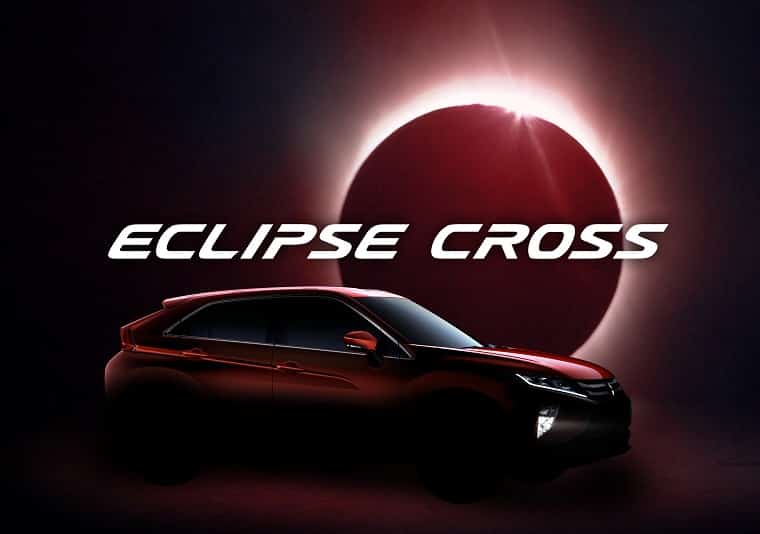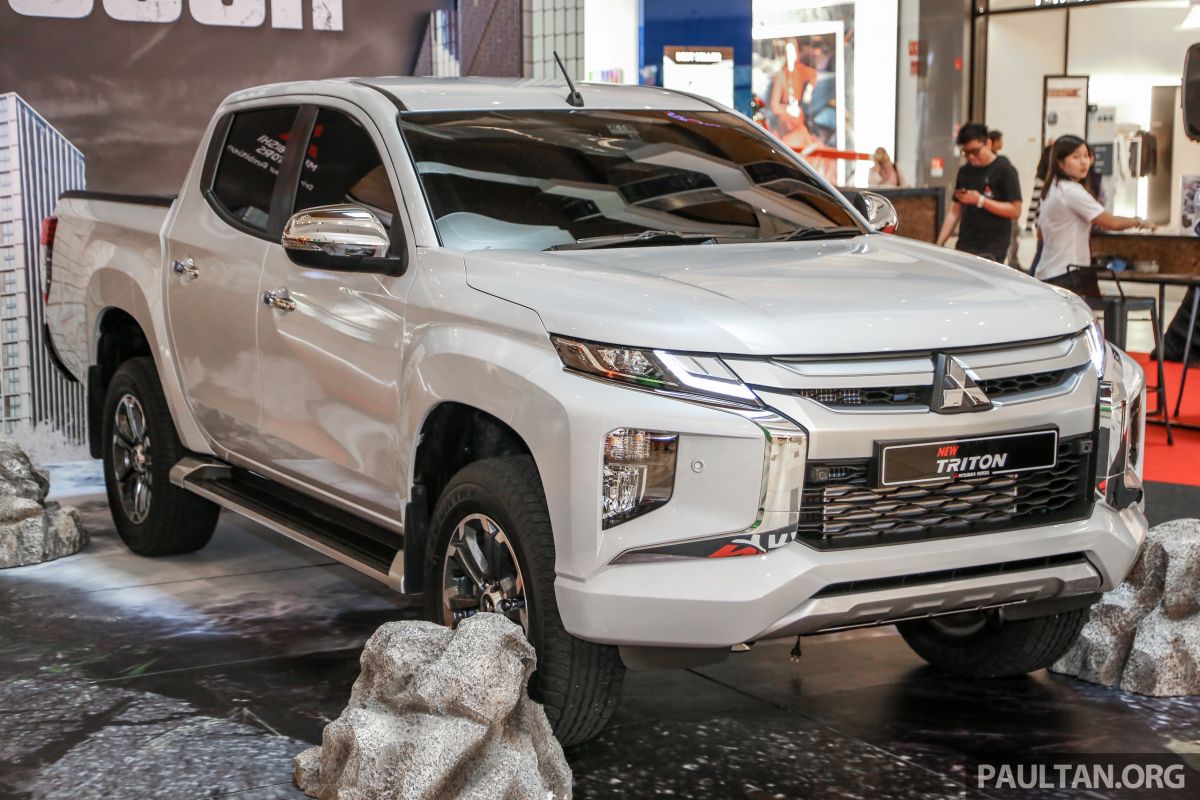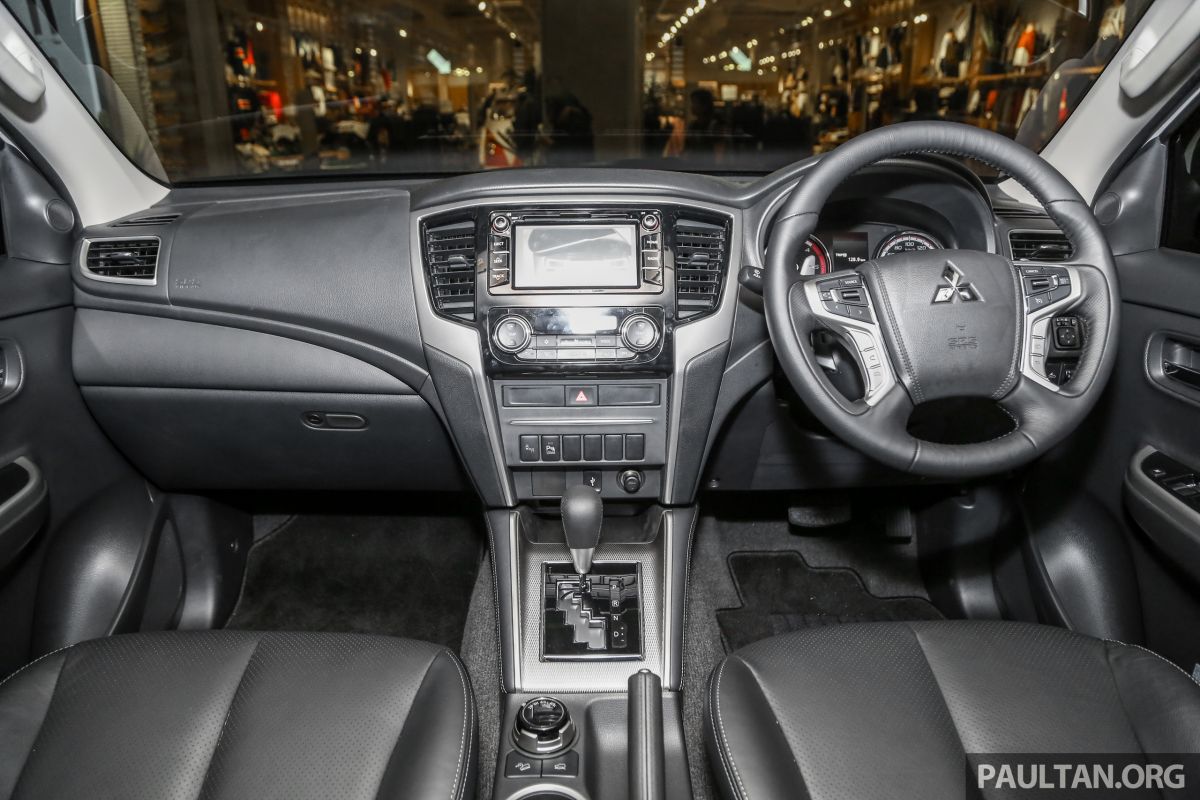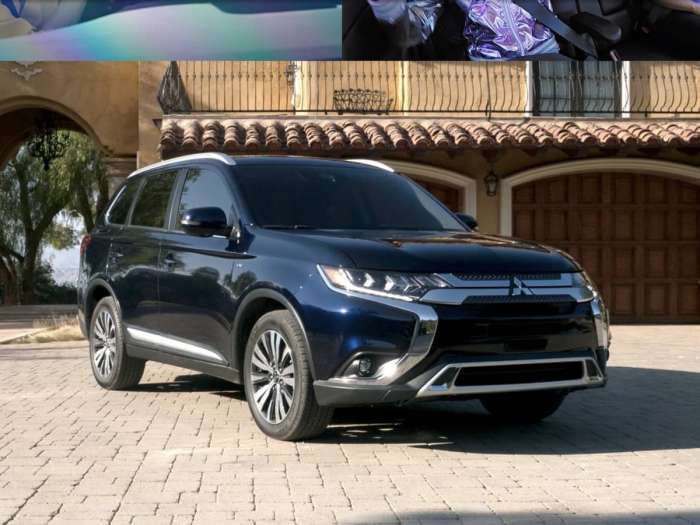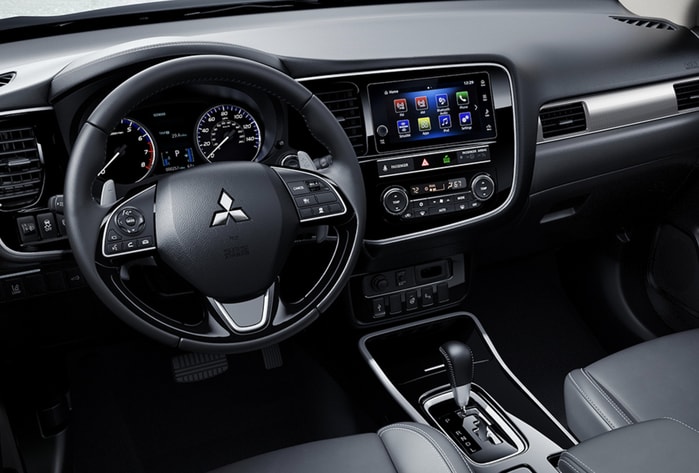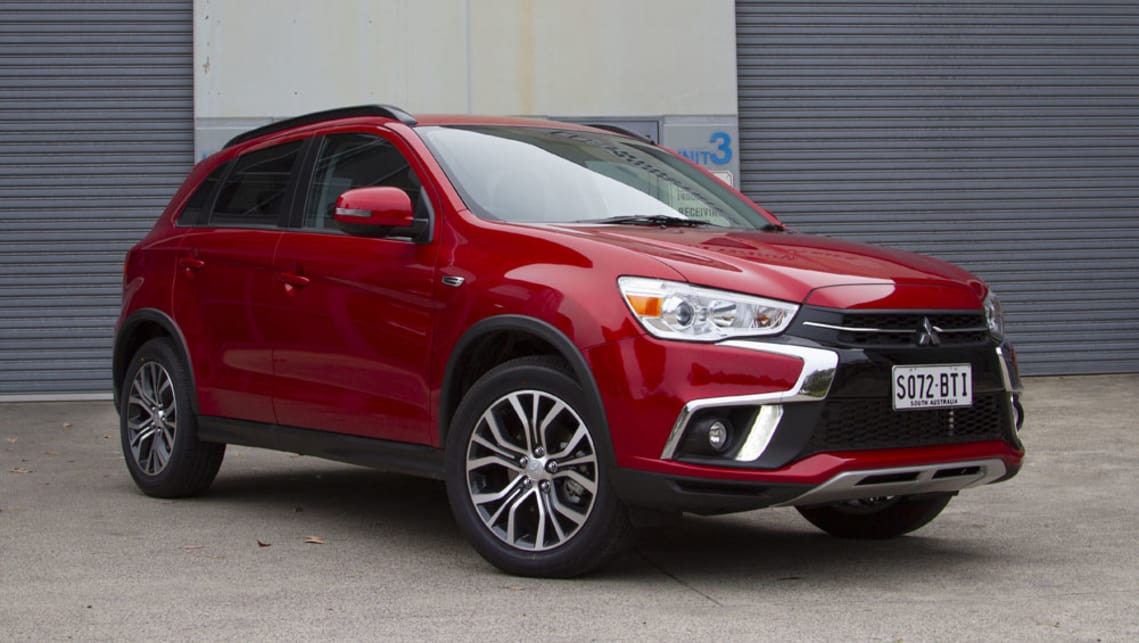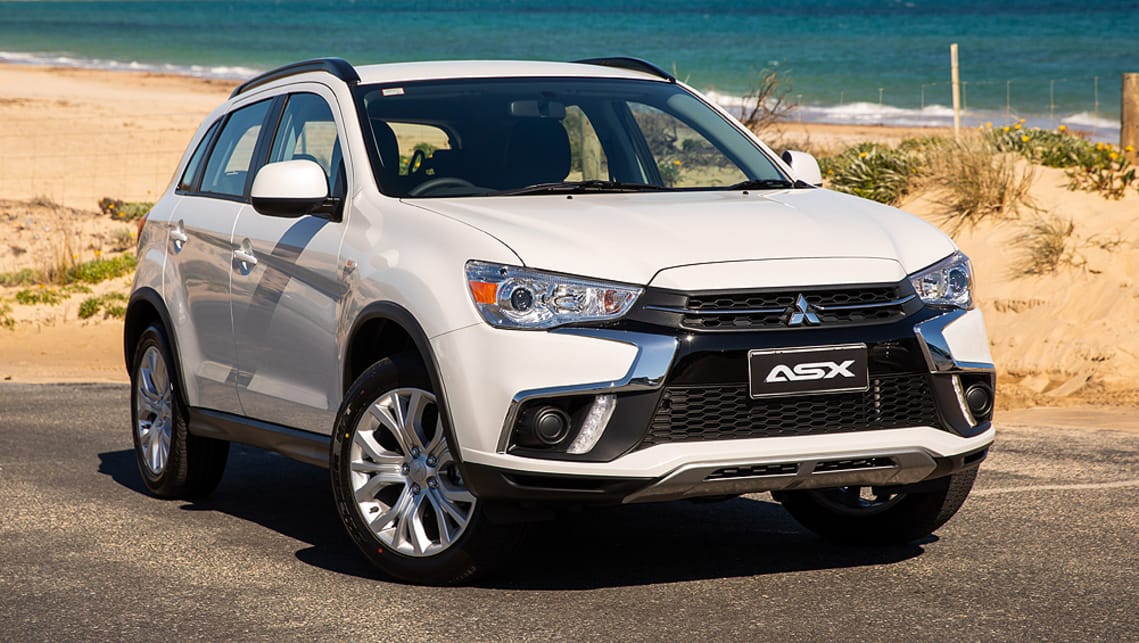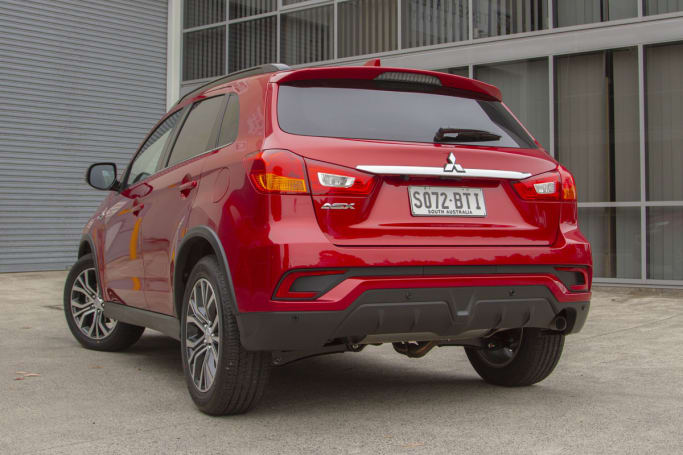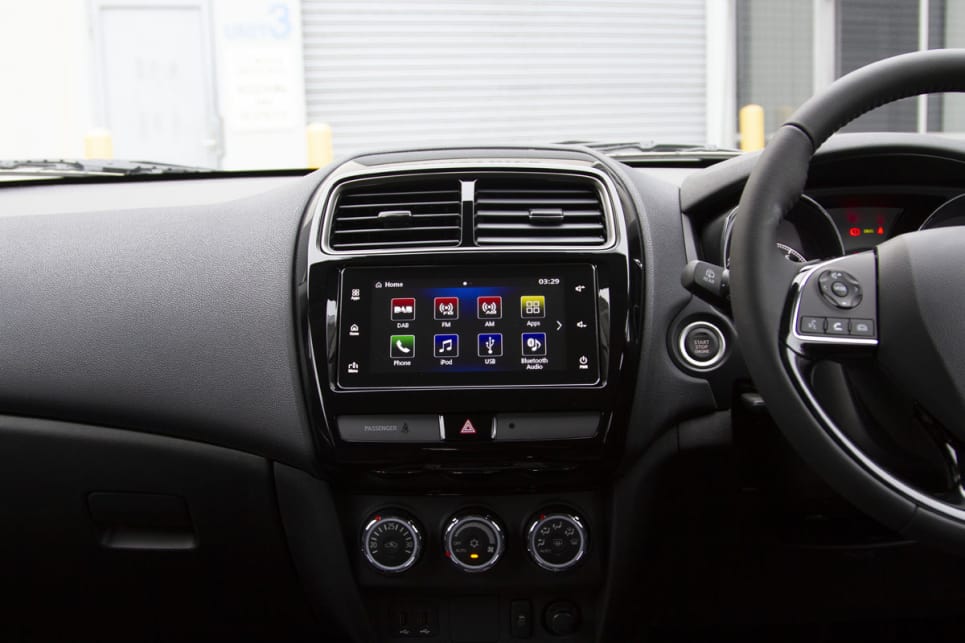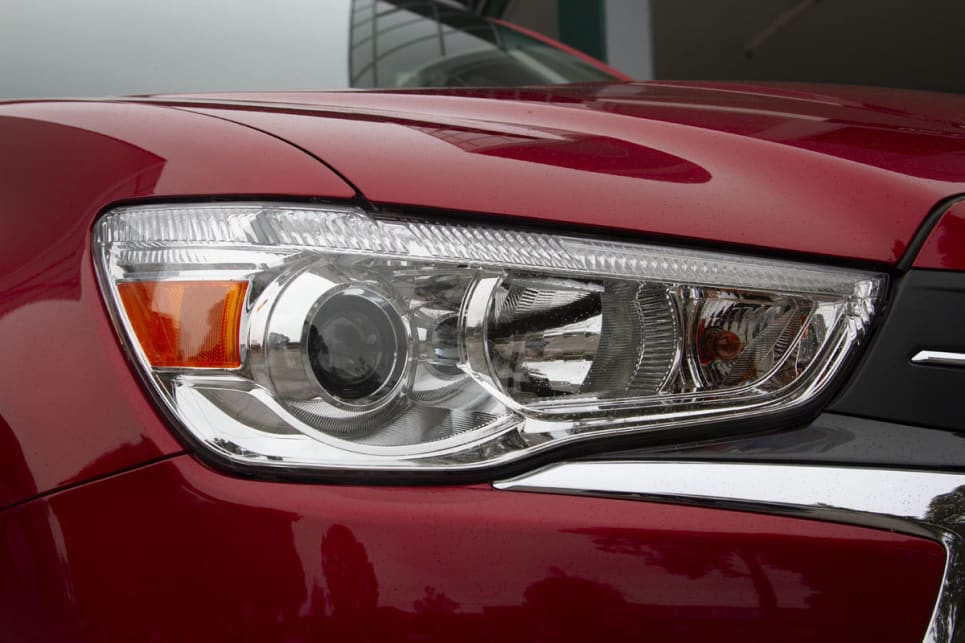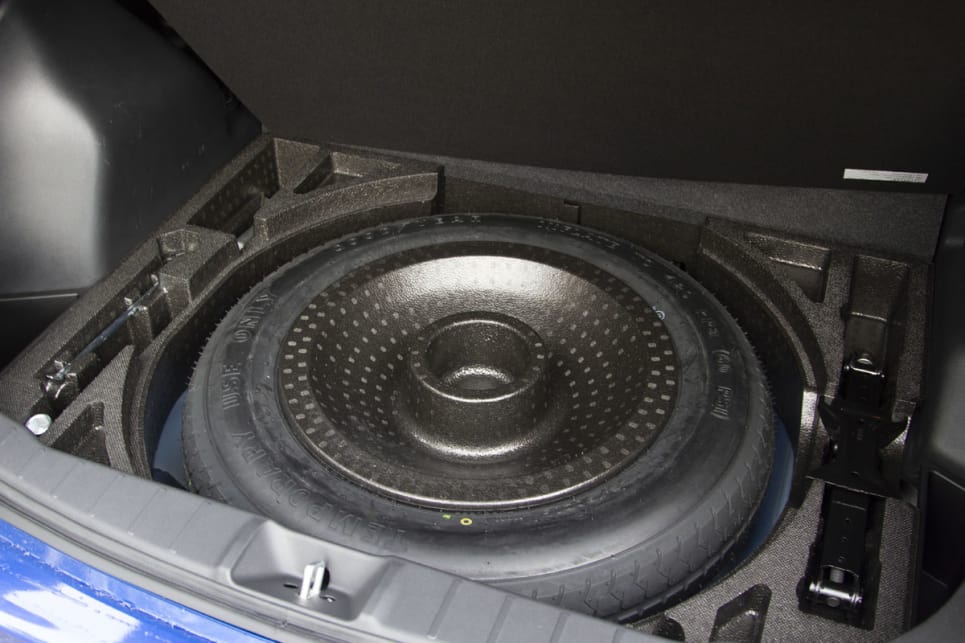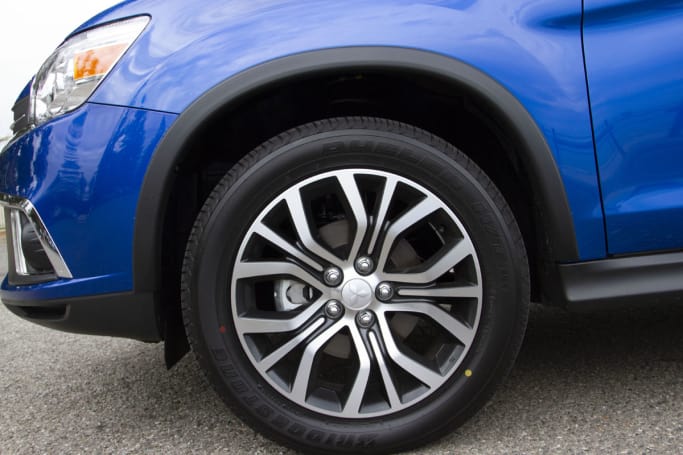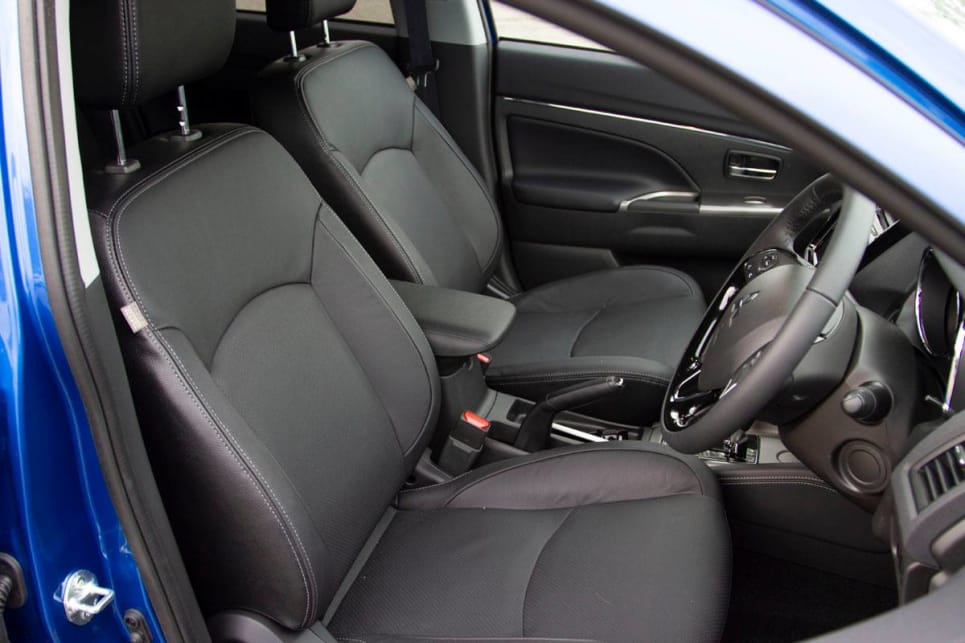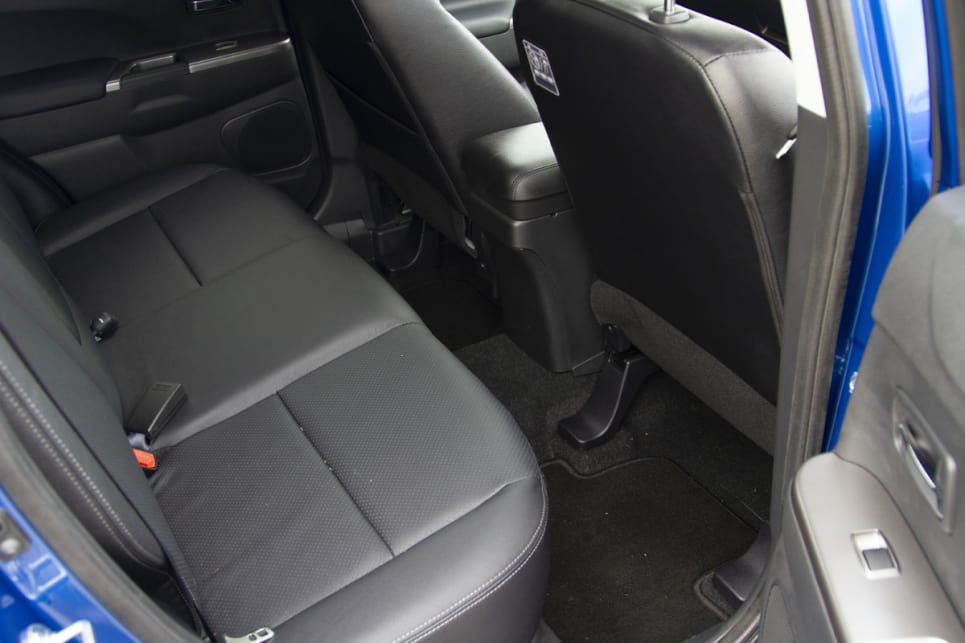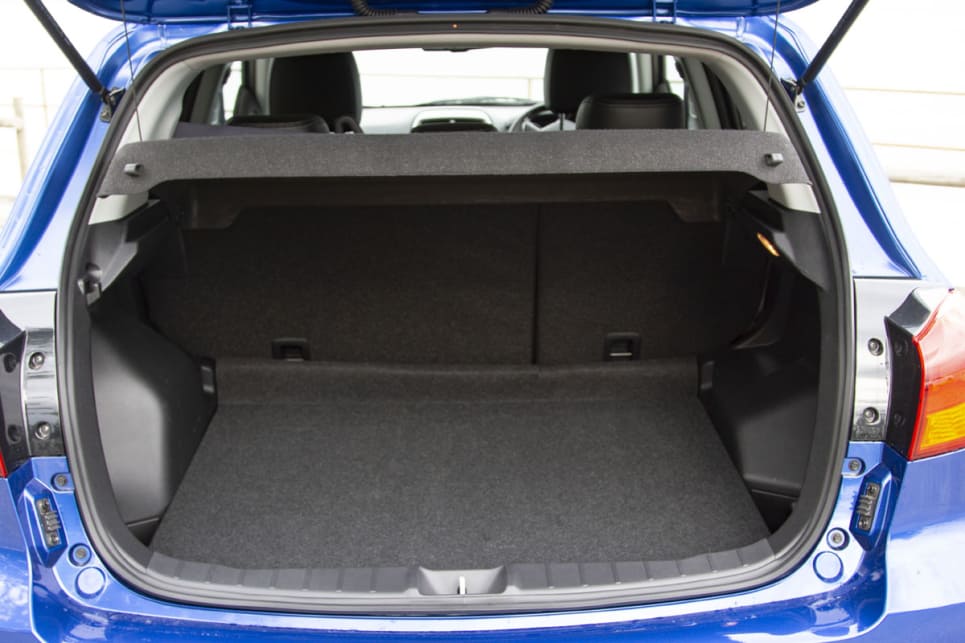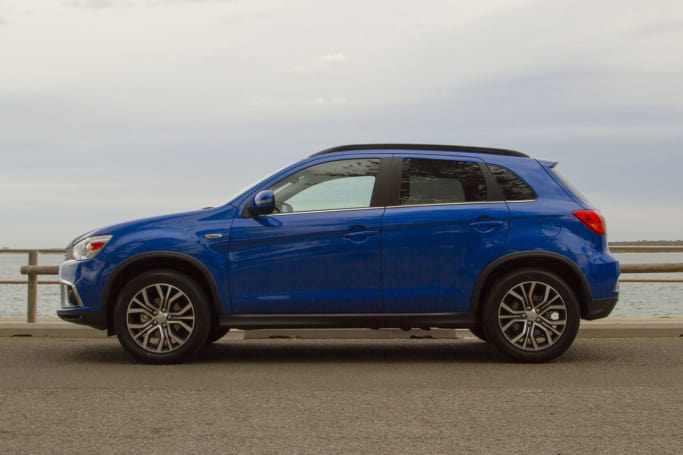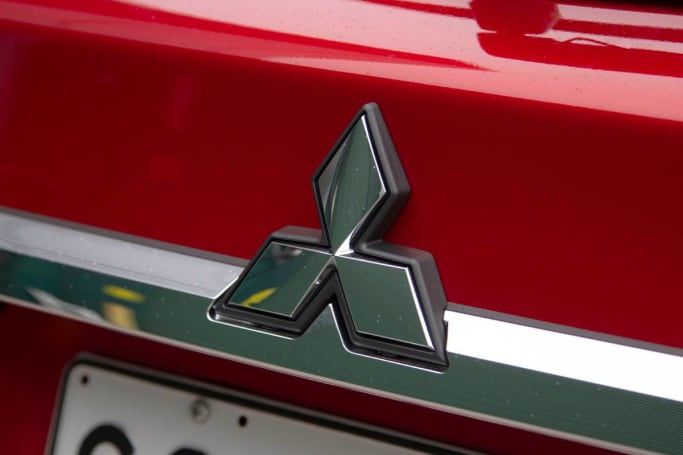It’s an interesting conundrum Mitsubishi presents to prospective buyers in the small-SUV segment. The Japanese manufacturer offers two candidates in the hotly contested segment, but each with a different approach.
Having two players in a burgeoning segment – a segment defying current sales trends by recording growth year-on-year – offers Mitsubishi two slices of the same pie. And it’s a big pie, too, with 25 models in the sub-R400K bracket, including the two Mitsies on test here.
In the budget corner, the Mitsubishi ASX takes a more traditional path to the art of the small SUV: a compact crossover that won’t stand out in a sea of similar offerings. Its simple, two-box design is augmented by styling details that won’t break the aesthetic thermometer. Nor the bank. Buyers recognise this, as the ASX is the market leader in a segment brimming with potential market leaders. In fact, between the ASX and Eclipse Cross, the twin Mitsubishis have snaffled nearly 28 percent of the market so far in 2019.
 The new Mitsubishi Eclipse Cross, on the other hand, takes an altogether more avant-garde approach to the art of design, with flourishes and styling touches straight out of the modernist playbook. Mitsubishi calls this design ethos ‘Dynamic Shield’.
The new Mitsubishi Eclipse Cross, on the other hand, takes an altogether more avant-garde approach to the art of design, with flourishes and styling touches straight out of the modernist playbook. Mitsubishi calls this design ethos ‘Dynamic Shield’.
A compelling case could be made for the Eclipse Cross crossing (yep, I did) into the medium-SUV segment. But, it’s classified as a small-SUV crossover, so here we are.
Despite their different stylistic approaches, both the ASX and Eclipse Cross are unashamedly urban-focussed crossovers – city dwellers offering a high-riding blend of practicality.

On test we have the ASX LS and Eclipse Cross LS. Same grade, then, but sitting on different rungs of their respective model-range ladders.
The ASX is second from the top of the ASX five-car tree, while the Eclipse Cross sits smack-bang in the middle of its five-model range. There is a noticable price difference between the ASX and Eclipse at Group 1 Mitsubishi. The price of edgy styling? Or is there more substance behind the extra spend?
The ASX LS, as befitting a near range-topper, is reasonably well specified. Sitting atop standard two-tone 18-inch alloys, the ASX LS boasts microsuede and leatherette interior trim, chrome highlights, front fog lamps, climate control, privacy glass and push-button start.
That’s on top of standard cruise control, LED daytime running lights, a 7.0-inch touchscreen with Smartphone Link Display Audio that incorporates Apple CarPlay and Android Auto connectivity, DAB+ digital radio, and Bluetooth connectivity.
The ASX LS scores some active safety – forward-collision mitigation, lane-departure warning, and hill start assist – but misses out on key features such as blind-spot monitoring, rear cross-traffic alert and lane-change assist. You’ll need to step into the top-spec Exceed to score those items.

 The Eclipse Cross actually scores a similar level of kit to its cousin, albeit wrapped in an edgier package. There are 18-inch alloys, push-button start, single-zone climate control, cruise control, a leather-wrapped steering wheel and gear shifter, and automatic wipers.
The Eclipse Cross actually scores a similar level of kit to its cousin, albeit wrapped in an edgier package. There are 18-inch alloys, push-button start, single-zone climate control, cruise control, a leather-wrapped steering wheel and gear shifter, and automatic wipers.
Like the ASX, there’s a 7.0-inch screen anchoring the infotainment system that features Android Auto and Apple CarPlay, but misses out on inbuilt satellite navigation. There’s DAB digital radio, too, while the sound system features six speakers against the ASX’s four.
The ASX also scores a win in the material department, its seats finished in a mix of microsuede and leatherette, while the Eclipse Cross, in this grade, is finished in cloth. That said, it’s a nice cloth trim finished in a diamond-shaped weave that looks pretty smart.
These twin Mitsubishis have snaffled nearly 28% of the market so far in 2019.
Like the ASX, the Eclipse Cross is fitted with autonomous emergency braking, lane-departure warning and hill start assist, but misses out on key safety tech like blind-spot monitoring, lane-keep assist and rear cross-traffic alert – again, features only available in higher grades.
So in terms of equipment, the two are pretty evenly matched, with neither really standing out against the other, although the price difference starts to stand out.


Once inside, the differences in approach become apparent. Yes, the ASX looks pretty smart with its fake suede and faux leather interior contrasted nicely with some red stitching. But, like with its exterior, the ASX rolls the arm over in terms of interior design, calling on the middle-of-the-road playbook for its execution.
The materials used are nice enough, if on the cheap side, but the overall impression is of a well-put-together car.
The 7.0-inch touchscreen is snappy to respond to inputs, although we decry the lack of a volume knob, the ASX making do with a touch-capacitive slider on the screen that is fiddly to use, particularly on the move.
Thankfully, the steering wheel has volume controls, but to my mind there’s nothing like a good old-fashioned dial.
The lack of navigation isn’t really a curse these days, although it must be noted AppleCar Play and Android Auto (and ergo Google maps) are only as good as cellular reception – fine for urban dwellers, not so much in the far rural reaches of this vast continent of ours.
Simple conveniences include two USB outlets and a 12V plug, while the bin in the centre console hides another 12V outlet, so charging options aplenty. Kudos, too, for the inclusion of DAB radio – not a gimme in many cars much further up the financial-outlay food chain.
While lacking a volume knob, the ASX does sport three large dials for the HVAC controls. They feel a little flimsy to use, but they do the job well enough.
Out back, there’s a surprising spaciousness that belies the ASX’s small underpinnings. The seats are on the firm side, certainly not as cushioning as those up front, but there’s a decent amount of leg, head and toe room. The seats are positioned a bit higher than those in the front, which affords decent visibility. Completing the picture are a couple of ISOFIX points on the outboard seats.
Creature comforts such as air vents and any type of charging point are noticeably absent, but there are a couple of cupholders in the fold-down centre armrest.
Boot space is adequate at 393L with the back row in use, expanding to a decent 1193L with the rear seats folded. A space-saver spare lurks under the floor.
The Eclipse Cross’s is an altogether more stylised and stylish interior; a clever redesign of existing Mitsubishi parts and switchgear. There’s obvious thought gone into the layout of the dash and the integration of the infotainment touchscreen, and it’s a design ethos carried through from the exterior.
Like the ASX, there are blanks in the centre console that hint at features only available higher up the range. Materials are quite nice and the whole cabin appears screwed together well.

 Plenty of brushed aluminium and gloss-black highlights, and that diamond-weave cloth trim for the seats actually looks pretty funky. The scalloped-layered dash design ups the design factor over the ASX, while the design and placement of the touchscreen are reminiscent of BMW. That’s no bad thing.
Plenty of brushed aluminium and gloss-black highlights, and that diamond-weave cloth trim for the seats actually looks pretty funky. The scalloped-layered dash design ups the design factor over the ASX, while the design and placement of the touchscreen are reminiscent of BMW. That’s no bad thing.
The seats are cushioning and supportive, while the leather-wrapped steering wheel feels nice in hand. Paddle-shifters complete the set-up, something the ASX doesn’t get.
The 7.0-inch touchscreen is a more modern interpretation than that found in the ASX, with a different graphical interface that is also more modern in its execution. Again, no integrated nav means relying on smartphone mirroring that works seamlessly. The same personal bugbear applies with regards to volume control, but again, steering wheel controls are just fine.
On the road it’s hard to split the pair, but the Eclipse Cross’s punchier engine and responsiveness are hard to go past.
Interestingly, the Eclipse Cross also scores a touchpad nestled into the centre console, which controls infotainment functions (because you can never have too many modes of input, right?).
It’s surprisingly precise and easy to use, without any of the overly sensitive touchiness found in similar features in another Japanese brand with a much higher price tag. Still, we’d venture, once the novelty wears this feature becomes a little redundant.
The Eclipse Cross shares the ASX’s two USB ports and single 12V, but somewhat surprisingly it misses out on the second 12V outlet in the centre console.
The second row is on a par with the ASX in terms of leg, knee and toe room, but thanks to a high-riding position the headroom is somewhat impacted. The back seats do slide fore and aft, while the seatbacks can be tilted to offer some comfortable reclining positions. Like the ASX, there are no air vents for back seat passengers.
Boot space isn’t as spacious as the ASX, coming in at 374L with the back row in use. However, sliding those seats forward frees up some room, with 448L available. Bear in mind, though, this will impact on space for back seat passengers.
Fold the second row down and you’ll have 1122L to play with – less than the ASX. A space-saver spare completes the picture.

 Picking a winner here is difficult, with very similar levels of equipment and comfort. The ASX feels more youthful in its execution, something that could appeal to a lot of buyers, but the Eclipse Cross matches that youthfulness with a design-led interior that feels more expensive than it actually it is.
Picking a winner here is difficult, with very similar levels of equipment and comfort. The ASX feels more youthful in its execution, something that could appeal to a lot of buyers, but the Eclipse Cross matches that youthfulness with a design-led interior that feels more expensive than it actually it is.
It’s under the bonnet where the biggest differences between the two crossovers can be found. As befitting its slightly ageing status (this-gen ASX has been around now since 2010), the ASX boasts a 2.0-litre inline four-cylinder, naturally aspirated petrol engine with outputs of 110kW (at 6000rpm) and 197Nm of torque (at 4200rpm).
Those outputs are sent to the front wheels via a continuously variable transmission (CVT).
The Eclipse Cross features a more modern turbocharged four-cylinder unit, 1.5 litres of displacement with the same 110kW of power (at 5500rpm) as the ASX, but a much healthier dollop of torque (250Nm available between 2000–3500rpm).
Like the ASX, drive is sent to the front wheels via a CVT. Power to weight comes in at 75.9 Watts per kilogram.
What that translates to on the road is an altogether peppier drive experience in the Eclipse Cross. While the power remains the same as the ASX, that extra torque available lower in the rev range is easily felt around town, the Eclipse moving away briskly while also providing enough urgency for overtakes and gaps in traffic.
The ASX isn’t exactly a slowpoke, but it lacks the potency of its garage cousin, despite its 125kg weight saving (1365kg against 1490kg). It works hard for its supper, a noisy thrashy little thing that labours up hills and in traffic.
The only respite comes on the motorway, the engine humming along quietly. Tyre roar, though, is at a level beyond reasonable.

 Still, drive the ASX like most are likely to be driven – around town – and the little crossover is a perfectly reasonable, if a little uninspiring, driver’s tool.
Still, drive the ASX like most are likely to be driven – around town – and the little crossover is a perfectly reasonable, if a little uninspiring, driver’s tool.
The Eclipse Cross, on the other hand, is a bit more engaging and that extra torque is noticeable, especially around town and on uphill sections.
It’s quieter, too, than the ASX, no doubt because it isn’t working as hard for the same level of motivation, while tyre roar over rough surfaces is noticeably less.
In terms of fuel consumption, it’s lineball between the two Mitsies. The ASX returned a combined reading of 9.2L/100km, while the Eclipse Cross sipped 8.9L.
Extended highway runs saw the ASX drink 6.8L, a figure bettered – just – by the Eclipse that returned 6.7L/100km. Both are happy to drink 91RON as a minimum. Not much in it, then.


Despite their different stylistic approaches, both the ASX and Eclipse Cross are unashamedly urban-focussed crossovers.
Neither of these contenders does much to add the ‘sport’ to Sports Utility Vehicle, but then neither do they pretend to be anything than what they are.
To that end, throwing either at a bunch of corners and expecting sports-car-like handling is pointless. Instead, with a suspension tune skewed towards urban, the likely hunting ground for both the ASX and the Eclipse Cross, Mitsubishi has ensured owners won’t feel short-changed with their purchase.
The ASX is soft enough to deal with the majority of the urban landscape with aplomb, settling quickly over speed humps and dispatching road acne with ease. The steering remains relatively light, although it does display some slackness when travelling at highway speeds.
Around town, too, the ASX is reasonably quiet, although rougher surfaces and highway speeds can become grating with tyre roar not just prevalent, but overwhelming inside the cabin. It’s unpleasant.
The Eclipse Cross mirrors the ASX in terms of suppleness around town, with a soft and cossetting ride that errs on the side of comfort. But coax the Eclipse up to highway speeds and the suspension tune’s shortcomings become apparent, the Mitsi not tackling undulations with the same composure as it does at slower city speeds. It’s not a deal-breaker by any stretch, but it’s worth noting.

 Noise suppression at 110km/h is better than it is in the ASX, making for an altogether more refined drive experience. So too the steering, which although on the light side remains direct.
Noise suppression at 110km/h is better than it is in the ASX, making for an altogether more refined drive experience. So too the steering, which although on the light side remains direct.
Throw either at some corners with intent and you’d be misguided. These aren’t performance cars. Nor do they pretend to be. If anything, the ASX remains slightly better balanced, perhaps thanks to its smaller (and shorter-in-height, 45mm to be precise) dimensions. The Eclipse Cross tends to display a bit of body roll, the ASX less so. Again, not a deal-breaker but worth mentioning.
Don’t ask too much of the dynamics of either and you’ll be rewarded with a supple and comfortable ride that insulates occupants from all but the worst of Australia’s scrappy road network.
There’s not a lot to split this pair in terms of ownership either. Naturally, both are covered by Mitsubishi’s five-year/100,000km warranty. And both require servicing at 12 months or 15,000km, whichever occurs first.

 In short, there are no losers here, certainly not if you’re Mitsubishi. The ASX continues to fly the flag for the Japanese brand, accounting for over 20 per cent of the market in the small-SUV segment. Only the Triton sells in larger numbers for Mitsubishi, and then only just.
In short, there are no losers here, certainly not if you’re Mitsubishi. The ASX continues to fly the flag for the Japanese brand, accounting for over 20 per cent of the market in the small-SUV segment. Only the Triton sells in larger numbers for Mitsubishi, and then only just.
Throw in the Eclipse Cross’s 7.1 per cent market share, and Mitsubishi enjoys a stranglehold on the small-SUV segment with a combined near 28 per cent market share.
And it’s easy to see why they sell in such numbers. Both present as an attractive and affordable option in an ultra-competitive segment. Sure, the ASX can appear dowdy compared to its ‘Dynamic Shield’-cloaked garage mate, but as a sharply priced, urban high-rider with plenty of standard features, the ASX offers a compelling proposition.

 And with a new, heavily facelifted ASX imminent (it’s due in July/August this year), there could well be some bargains to be had in Mitsubishi showrooms.
And with a new, heavily facelifted ASX imminent (it’s due in July/August this year), there could well be some bargains to be had in Mitsubishi showrooms.
On the road it’s hard to split the pair, but the Eclipse Cross’s punchier engine and responsiveness are hard to go past, while the ASX gets the nod for interior practicality as well as taking the gong for ownership costs.
But, despite carrying a pricier premium over its pan-brand rival, the Eclipse Cross takes the overall win thanks to its cutting-edge styling, sharper performance, and fresh interior design that looks and feels premium.
Article source: https://www.caradvice.com.au/699552/2019-mitsubishi-asx-ls-v-mitsubishi-eclipse-cross-ls-comparison/






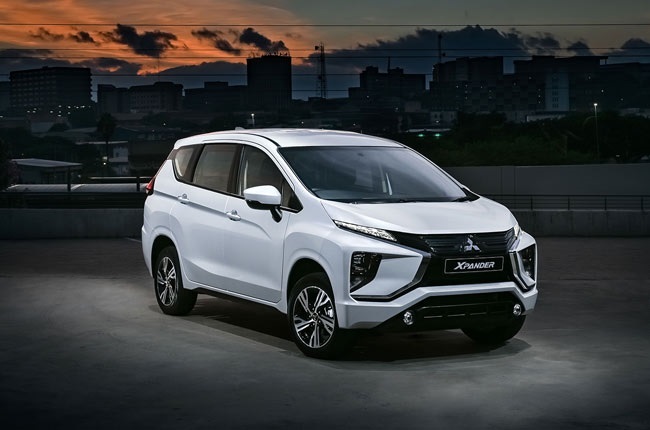


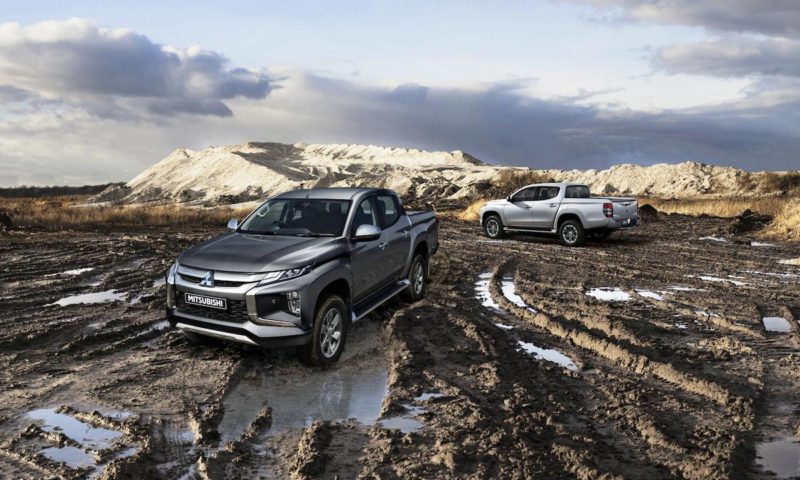





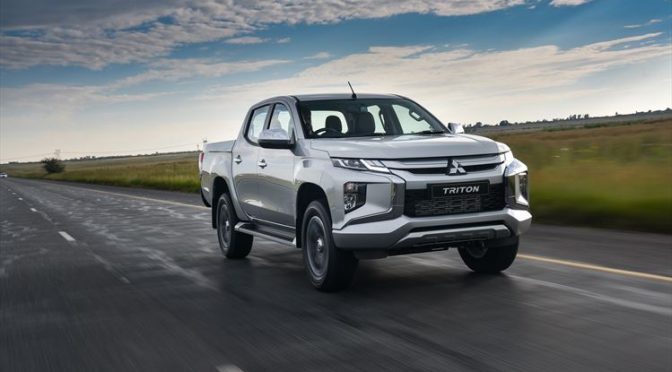
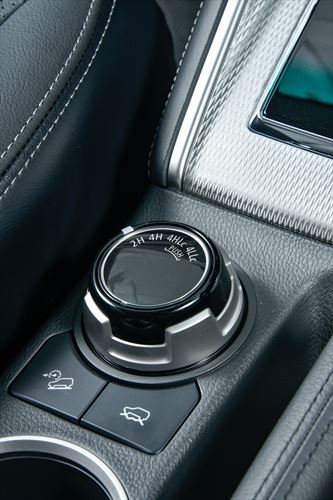
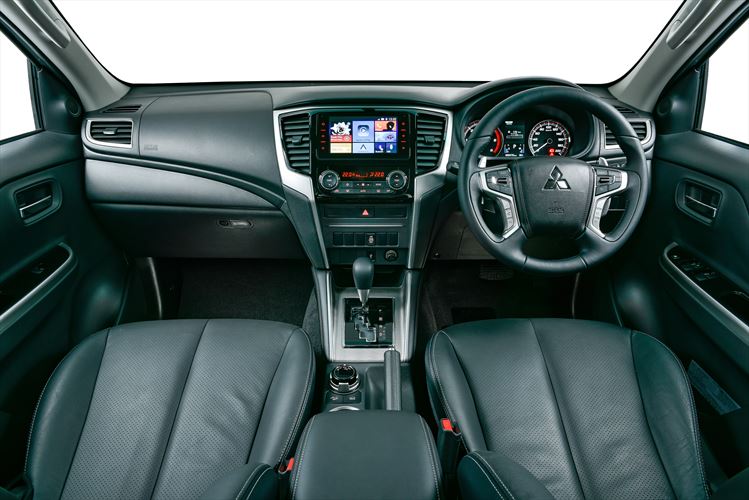






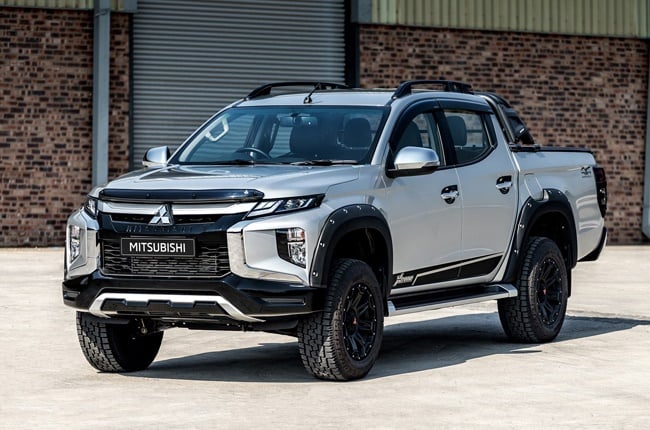
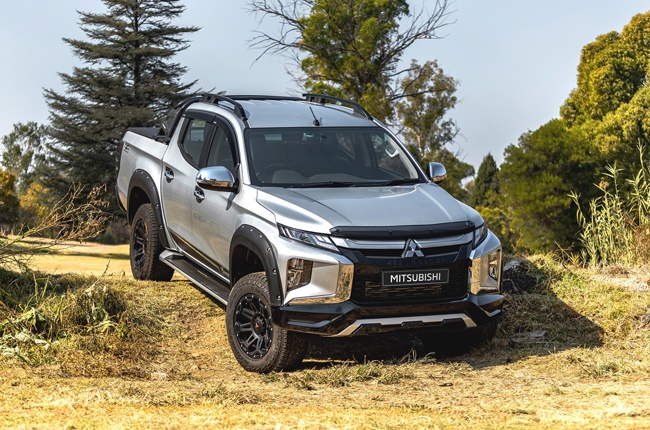
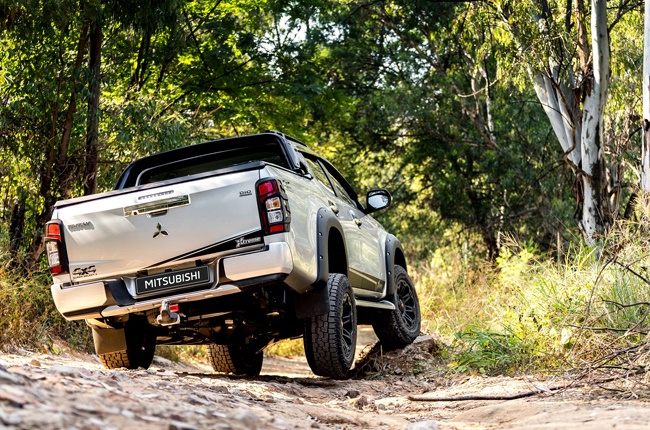
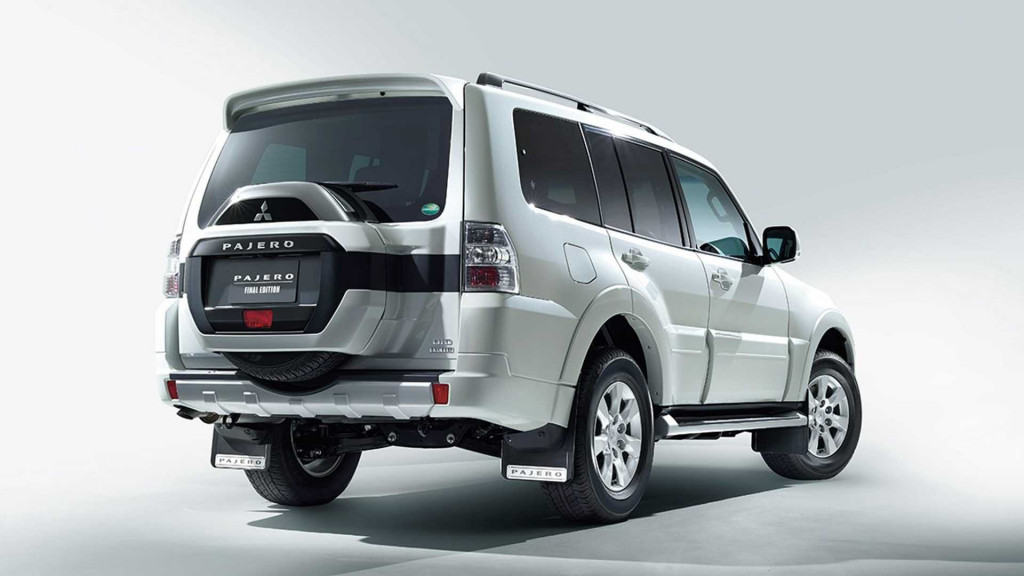
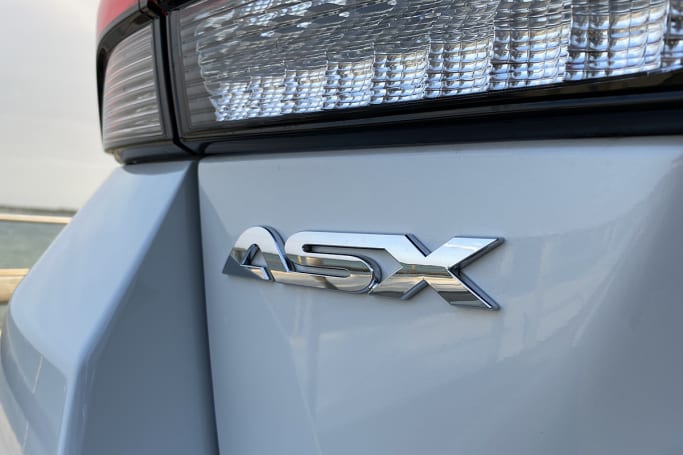
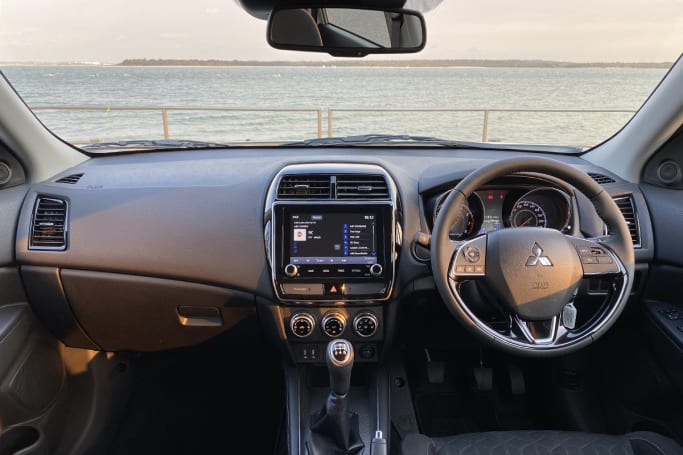

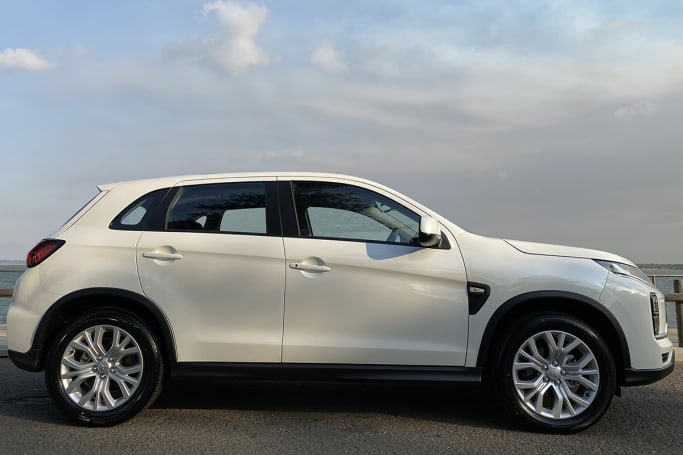

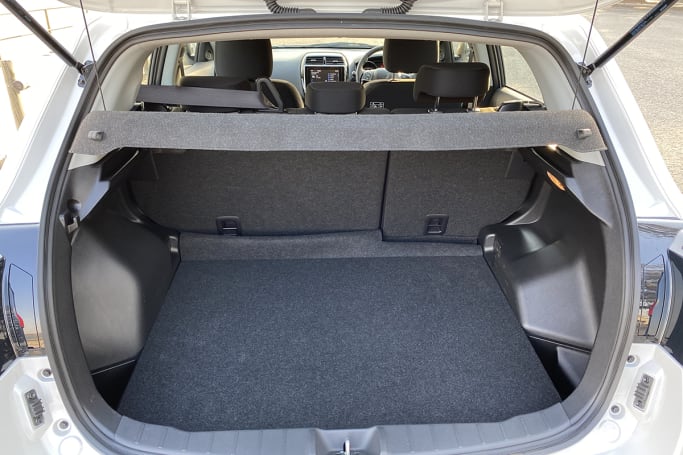





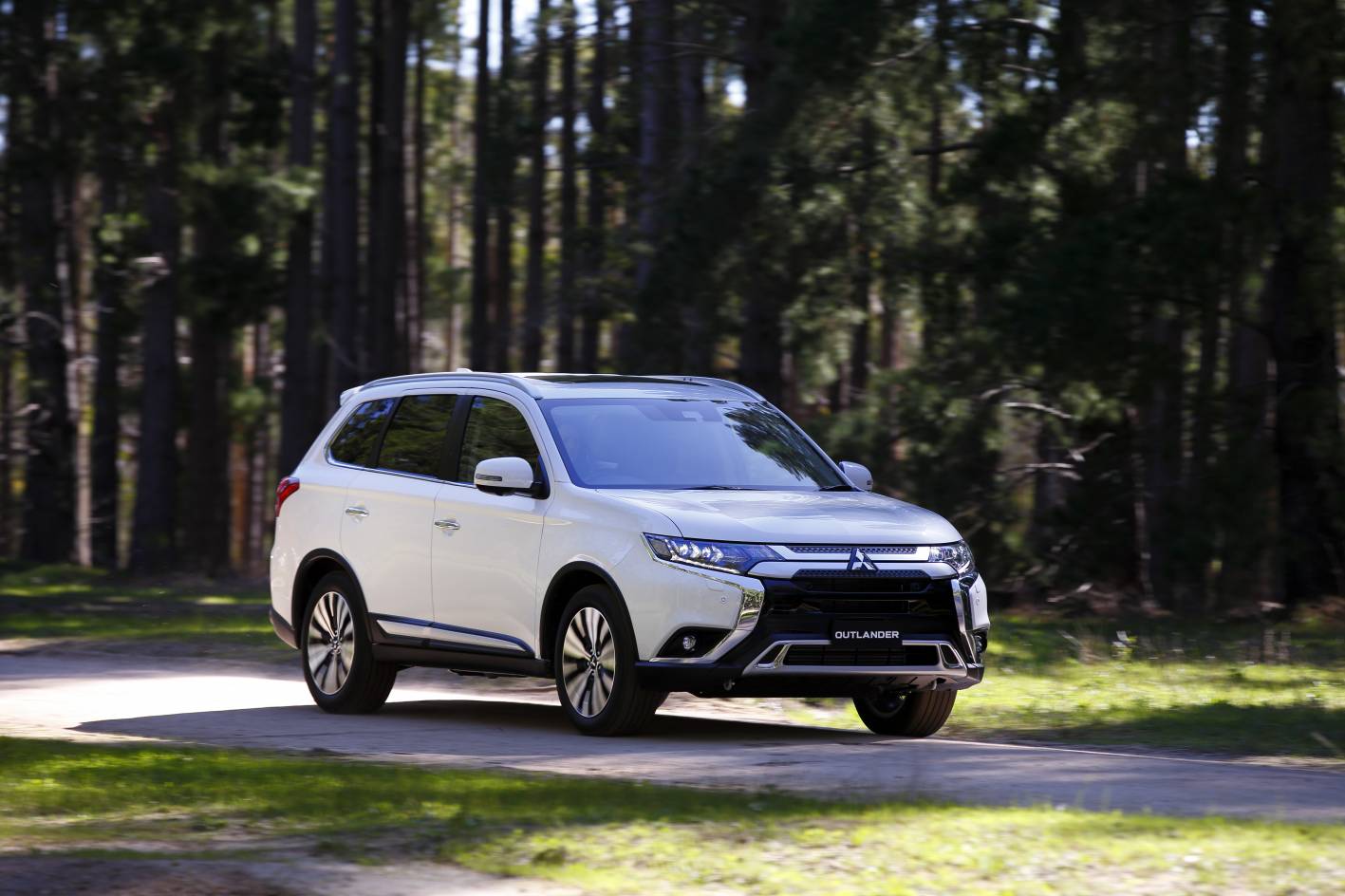
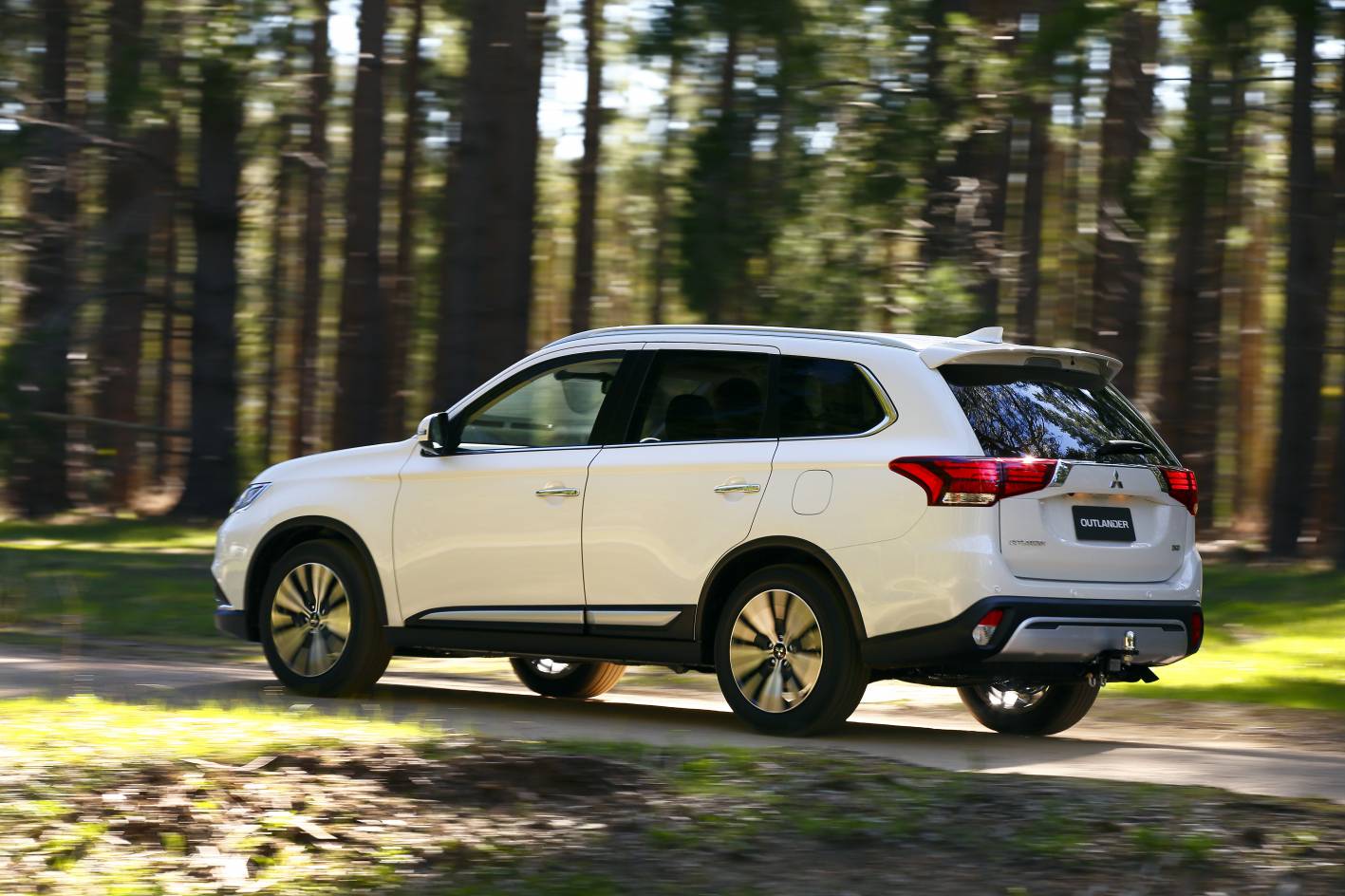
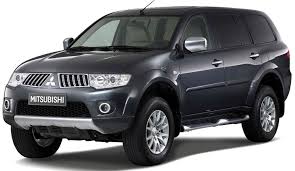
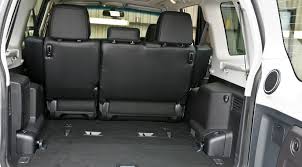
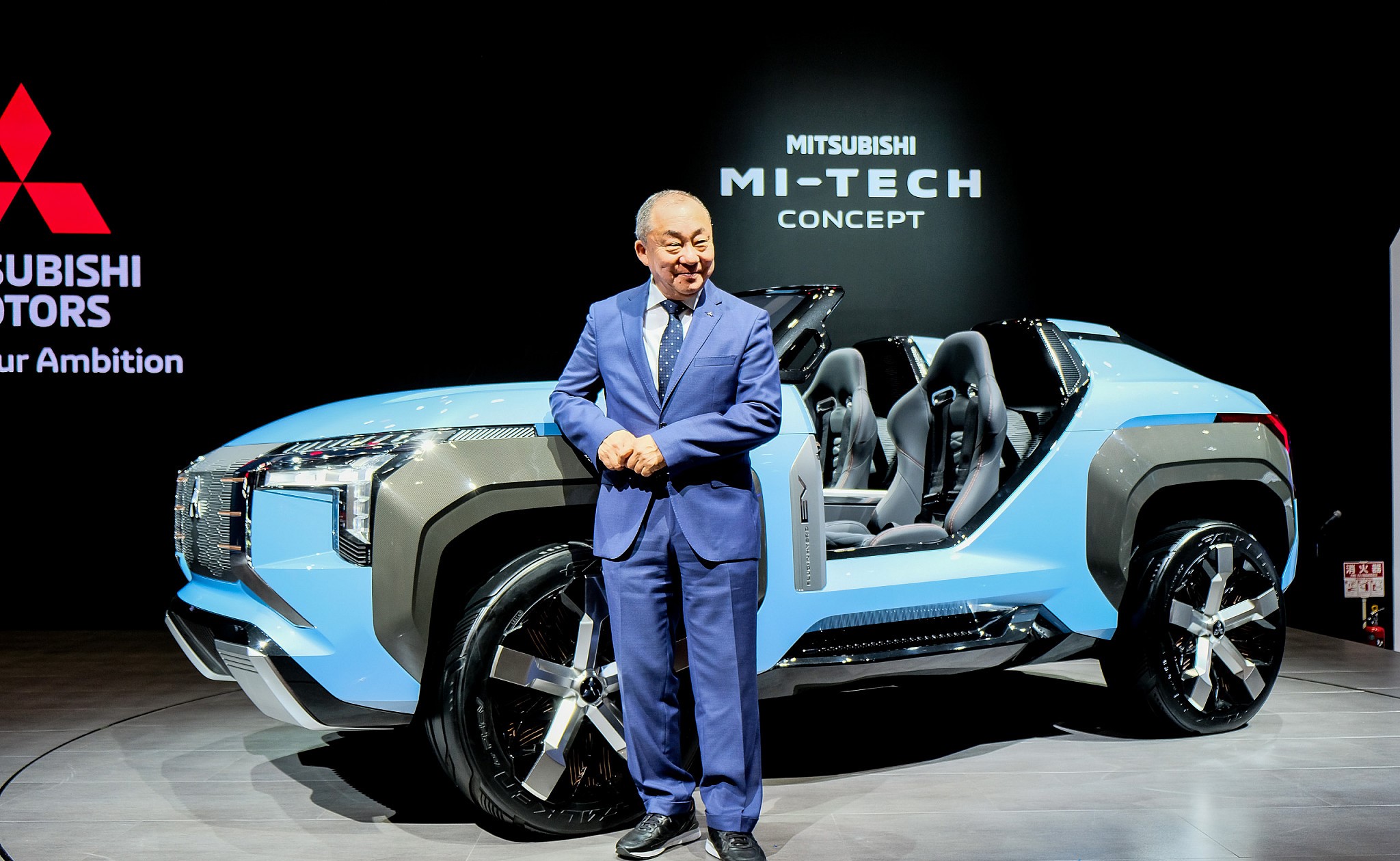


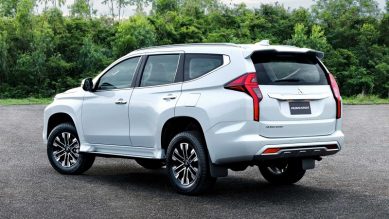




 The new
The new 

 The Eclipse Cross actually scores a similar level of kit to its cousin, albeit wrapped in an edgier package. There are 18-inch alloys, push-button start, single-zone climate control, cruise control, a leather-wrapped steering wheel and gear shifter, and automatic wipers.
The Eclipse Cross actually scores a similar level of kit to its cousin, albeit wrapped in an edgier package. There are 18-inch alloys, push-button start, single-zone climate control, cruise control, a leather-wrapped steering wheel and gear shifter, and automatic wipers.


 Plenty of brushed aluminium and gloss-black highlights, and that diamond-weave cloth trim for the seats actually looks pretty funky. The scalloped-layered dash design ups the design factor over the ASX, while the design and placement of the touchscreen are reminiscent of BMW. That’s no bad thing.
Plenty of brushed aluminium and gloss-black highlights, and that diamond-weave cloth trim for the seats actually looks pretty funky. The scalloped-layered dash design ups the design factor over the ASX, while the design and placement of the touchscreen are reminiscent of BMW. That’s no bad thing.
 Picking a winner here is difficult, with very similar levels of equipment and comfort. The ASX feels more youthful in its execution, something that could appeal to a lot of buyers, but the Eclipse Cross matches that youthfulness with a design-led interior that feels more expensive than it actually it is.
Picking a winner here is difficult, with very similar levels of equipment and comfort. The ASX feels more youthful in its execution, something that could appeal to a lot of buyers, but the Eclipse Cross matches that youthfulness with a design-led interior that feels more expensive than it actually it is.
 Still, drive the ASX like most are likely to be driven – around town – and the little crossover is a perfectly reasonable, if a little uninspiring, driver’s tool.
Still, drive the ASX like most are likely to be driven – around town – and the little crossover is a perfectly reasonable, if a little uninspiring, driver’s tool.


 Noise suppression at 110km/h is better than it is in the ASX, making for an altogether more refined drive experience. So too the steering, which although on the light side remains direct.
Noise suppression at 110km/h is better than it is in the ASX, making for an altogether more refined drive experience. So too the steering, which although on the light side remains direct.
 In short, there are no losers here, certainly not if you’re Mitsubishi. The ASX continues to fly the flag for the Japanese brand, accounting for over 20 per cent of the market in the small-SUV segment. Only the
In short, there are no losers here, certainly not if you’re Mitsubishi. The ASX continues to fly the flag for the Japanese brand, accounting for over 20 per cent of the market in the small-SUV segment. Only the 
 And with a
And with a 

 The redesigned SUVs will have around an extra 7.9-inches in length between each. Expect to see the Outlander get larger and the Outlander Sport to become smaller. The next Eclipse Cross will get slightly larger as well. So how is Mitsubishi able to redesign these models so relatively quickly and get them to market? Thank the Renault-Nissan-Mitsubishi alliance. It’s called platform sharing.
The redesigned SUVs will have around an extra 7.9-inches in length between each. Expect to see the Outlander get larger and the Outlander Sport to become smaller. The next Eclipse Cross will get slightly larger as well. So how is Mitsubishi able to redesign these models so relatively quickly and get them to market? Thank the Renault-Nissan-Mitsubishi alliance. It’s called platform sharing.


